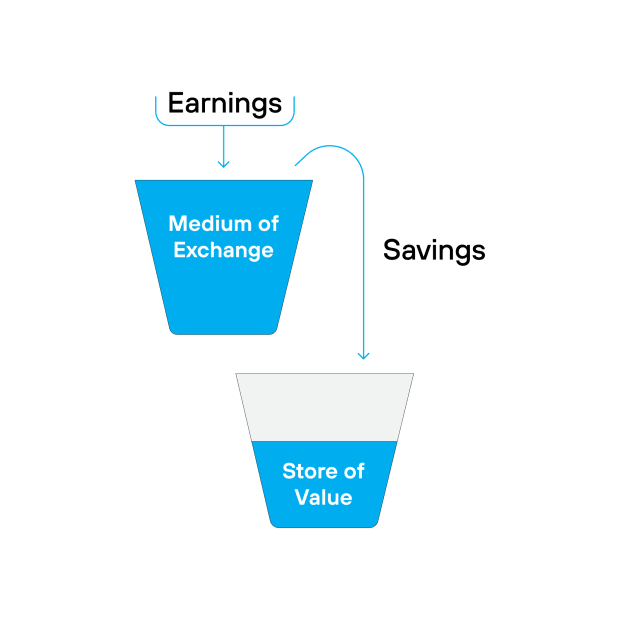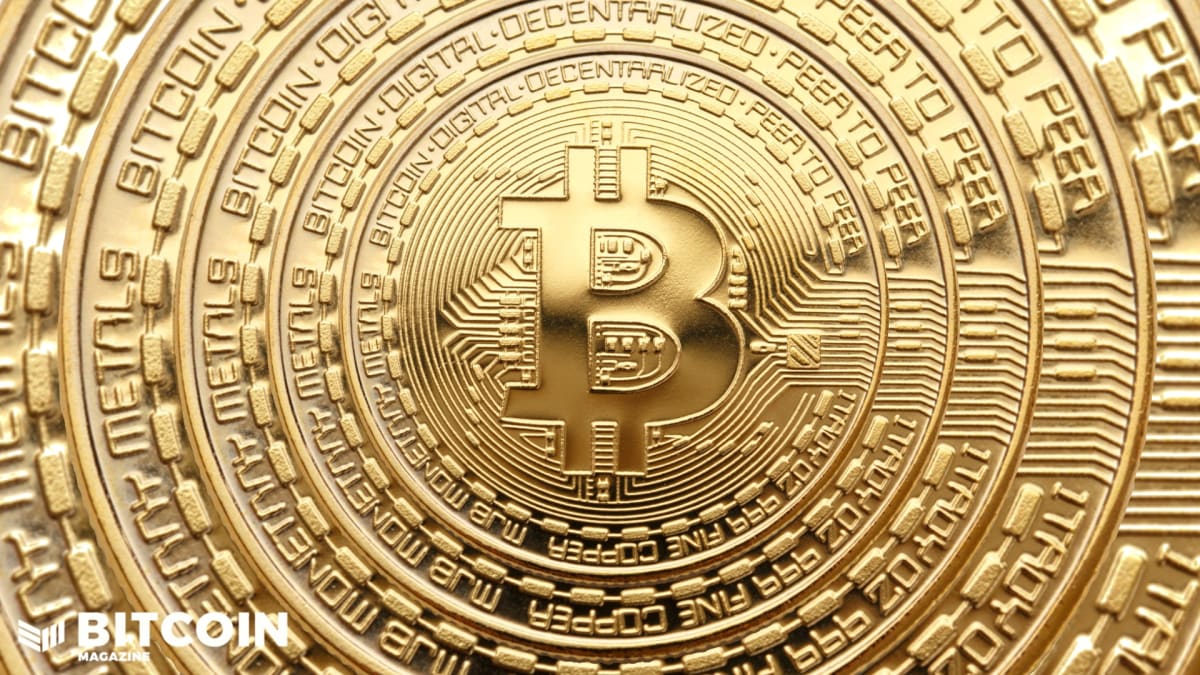Blogs & Articles: What Is Nakamoto-Gresham’s Law, And How Does It Pertain To Bitcoin? 🔗 2 years ago

- Category: Blogs & Articles | Bitcoin Magazine: Bitcoin News, Articles, Charts, and Guides
- Author(s): Josef Tětek
- Published: 27th January 2022 21:45
We know the idea of Gresham's law — but it cannot be applied directly to bitcoin without some modification.
Bitcoin is money. That means it’s openly competing with the incumbent fiat monetary regime. A co-circulation of two types of money isn’t unprecedented, and the economic principle that describes the outcome is known as Gresham's law. Applying Gresham’s insight to the bitcoin-fiat dynamic, we find that HODLing is economically rational under current conditions.
“Good and bad coin cannot circulate together.” — Thomas Gresham, 1558
The Hierarchy Of Monetary Needs
To understand the rationality of HODLing, let’s briefly recap why an advanced civilization needs properly functioning money.
Human action is purposeful behavior, and the foremost purpose on everyone’s mind is to satisfy their most pressing needs first. If a person owns money and their basic needs are not satisfied, they will most likely choose to exchange their money for food, clothes and shelter before anything else. Only once their basic needs are satisfied can money be saved to obtain the satisfaction of more sophisticated needs in the future.

Money needs to work as a medium of exchange first and foremost. But the urgency of this function is quickly saturated and the store of value function of money quickly becomes the most important.
Medium Of Exchange Or Store Of Value?
We can illustrate the two functions of money and their relation in the form of buckets. The medium of exchange is the first bucket we need to fill in order to satisfy our basic needs. Once that bucket is full, it overflows into the store of value bucket. The medium of exchange bucket has a limited capacity, as there are a limited amount of goods and services we need to buy and consume in a short time frame. The store of value bucket, on the other hand, has an infinite capacity, as we can always increase the size of our savings.

The problem is that fiat money isn’t a very good savings container. Fiat is money with infinite supply, and each new dollar dilutes the purchasing power of all the outstanding dollars. In the 20 months since January 2020, the U.S. dollar money supply rose by 35% — that is, by $5.4 trillion — and this has resulted in exploding prices all across the board: consumer goods, material, houses, financial instruments. Fiat is a very leaky bucket, because anything saved will gradually lose its purchasing power.

With those insights in mind, let’s see how Bitcoin fits in.
Gresham Meets Nakamoto
Bitcoiners sometimes invoke Gresham’s law as a reason why Bitcoin will succeed, but the truth is that it’s not applicable in its original form to the present situation.
Gresham’s analysis covers a case of two currencies where the face value of both currencies is set by the government. The best historical example of Gresham’s law in action is the era of bimetallism. Between the years of 1792–1873, the face value of gold and silver was fixed — at first in the ratio of 15 to 1 — so that 15 ounces of silver were deemed equal to one ounce of gold. But the problem was that the price ratio of gold and silver oscillated around this parity over time, leading to one metal being overvalued and the second being undervalued. The government made several adjustments to this fixed, face-value ratio until it finally relinquished the idea of bimetallism and shifted to a pure gold standard in 1873.
 The market ratio between gold and silver was volatile in the U.S. bimetallism period. The fixed ratio between the two metals was 15:1 in 1792–1837, later changed to 16:1 in 1837–1873. Silver became undervalued in the latter period, it was driven out of circulation, and ultimately abandoned in favor of the pure gold standard (Source).
The market ratio between gold and silver was volatile in the U.S. bimetallism period. The fixed ratio between the two metals was 15:1 in 1792–1837, later changed to 16:1 in 1837–1873. Silver became undervalued in the latter period, it was driven out of circulation, and ultimately abandoned in favor of the pure gold standard (Source).
As Murray Rothbard points out in, “What Has Government Done to Our Money,” the correct phrasing of Gresham’s law isn’t the popular “bad money drives out good money” but rather “money overvalued artificially by government will drive out of circulation artificially undervalued money.”
Clearly this doesn’t apply to the bitcoin-fiat dynamic, as the government doesn’t set the face value of bitcoin. So, in order to apply the insights of Gresham's law in the context of bitcoin, we need to dissect Gresham’s insight and come up with a modified version of the original law that takes into account a co-circulation of fiat and non-fiat money.
For that, I believe that we need to further rephrase Rothbard’s interpretation of Gresham’s law. What does it actually mean that one type of money drives out the other from circulation? Through the lens of monetary functions, it means that one currency takes on the role of being a medium of exchange, and the other a store of value.
So, the dissected version of the original Gresham’s law would then read:
Overvalued money will become the dominant medium of exchange in the economy, while the undervalued money will become the dominant store of value.
This is precisely what happened in the bimetallism era, when gold became the preferred medium of exchange instrument, while silver was “hoarded” as a store of value.
Now to finally apply this insight to bitcoin versus fiat, we have to get rid of the overvalued and undervalued parameters. I believe that these can be replaced by a forward-looking evaluation of the respective monetary policies of fiat and bitcoin. Fiat is a type of money with potentially infinite issuance, while bitcoin is a type of money with a guaranteed, fixed issuance. (For those wondering whether bitcoin’s issuance is really guaranteed, I recommend reading through Parker Lewis’ “Bitcoin Is Not Backed by Nothing,” where he explains the credibility of bitcoin’s monetary policy).
It’s safe to assume that fiat will keep on inflating and thus dilute the purchasing power of all the outstanding units.
It’s also safe to assume that bitcoin will keep true to its monetary policy of fixed issuance, so the purchasing power of the outstanding units will not be diluted in the future.
Now we can restate Gresham’s law to account for the co-circulation of fiat and non-fiat money.
Presenting,
Nakamoto-Gresham’s Law
Bitcoin drives out fiat as a store of value.
Fiat drives out bitcoin as a medium of exchange.
In layman’s terms, it’s rational to spend fiat and HODL bitcoin. Fiat loses its value over time, so we naturally look for ways to get rid of it. Bitcoin gains in value over time, so we naturally look for ways to hold on to it.
We will see the strengthening effects of Nakamoto-Gresham’s law as more people realize that (1) fiat will keep on failing in its role as a store of value, and (2) bitcoin will keep on gaining traction for its store of value function, mostly through its increasing credibility of being the world’s only monetary instrument with a predictable monetary policy.
However, there are two conditions to Nakamoto-Gresham’s law:
Condition A: Fiat is usable as a medium of exchange. This is not the case in some countries (especially in the case of cross-border payments), so we may see bitcoin also being used as a medium of exchange in such places. El Salvador’s rising usage of the Lightning Network for remittance payments is an apt example of bitcoin being used as a medium of exchange because of fiat’s shortcomings.
Condition B: An individual or company receives fiat earnings. Fiat earners will look to get rid of fiat before bitcoin. If the given individual or a company is already fully bitcoinized and handles bitcoin only, then bitcoin naturally becomes a medium of exchange as well.
Bitcoin Prevents Civilizational Degradation
Economists, pundits and talking heads of all kinds who criticize bitcoin for not being a widespread medium of exchange are missing the point. In the leaky bucket environment we are in, we don’t need another medium of exchange, especially when fiat still serves this role satisfactorily and most of our wages are still in fiat. It would be quite irrational to spend bitcoin while we still have fiat to spend. HODLing bitcoin is a purely rational act as it provides us with the store of value function that fiat increasingly fails to sustain.
When fiat ceases to satisfy the role of the medium of exchange, or when individuals receive the entirety of their earnings in bitcoin, only then does it make sense to regularly spend bitcoin on daily purchases.
Bitcoin becoming a widespread store of value might prove to be a civilization-saving event. Developed civilizations need a reliable store of value to build and preserve wealth. When we don’t build up savings and instead spend everything we earn (and more, via debt), our infrastructure becomes fragile, societal values become corrupt, and the future becomes highly discounted. We see where this leads to through many historical examples: coin debasements of Ancient Rome led to the empire’s collapse; hyperinflations of the 20th and 21st century led to war, totalitarianism and famine. We can escape this fate, both on the individual and societal level, by embracing Bitcoin.
This is a guest post by Josef Tětek. Opinions expressed are entirely their own and do not necessarily reflect those of BTC, Inc. or Bitcoin Magazine.












